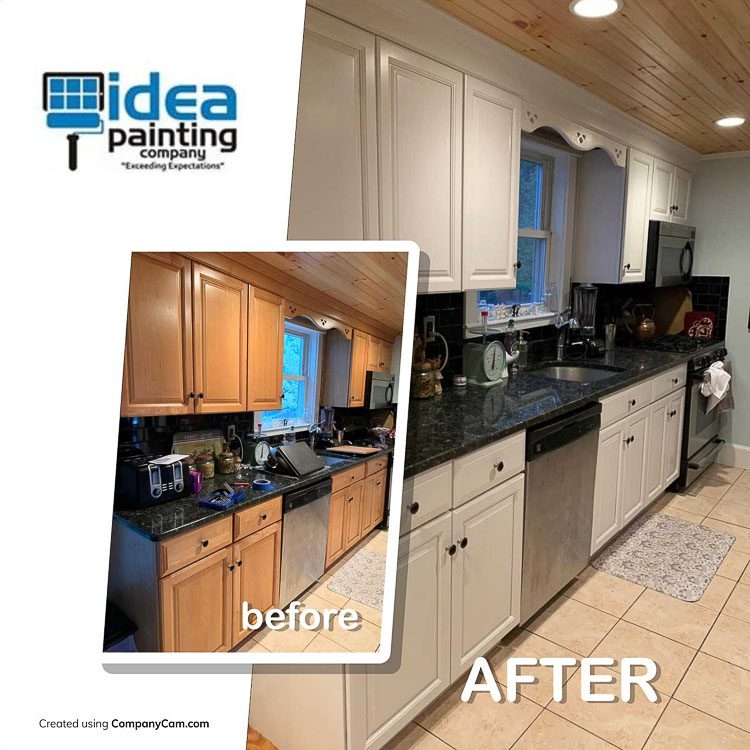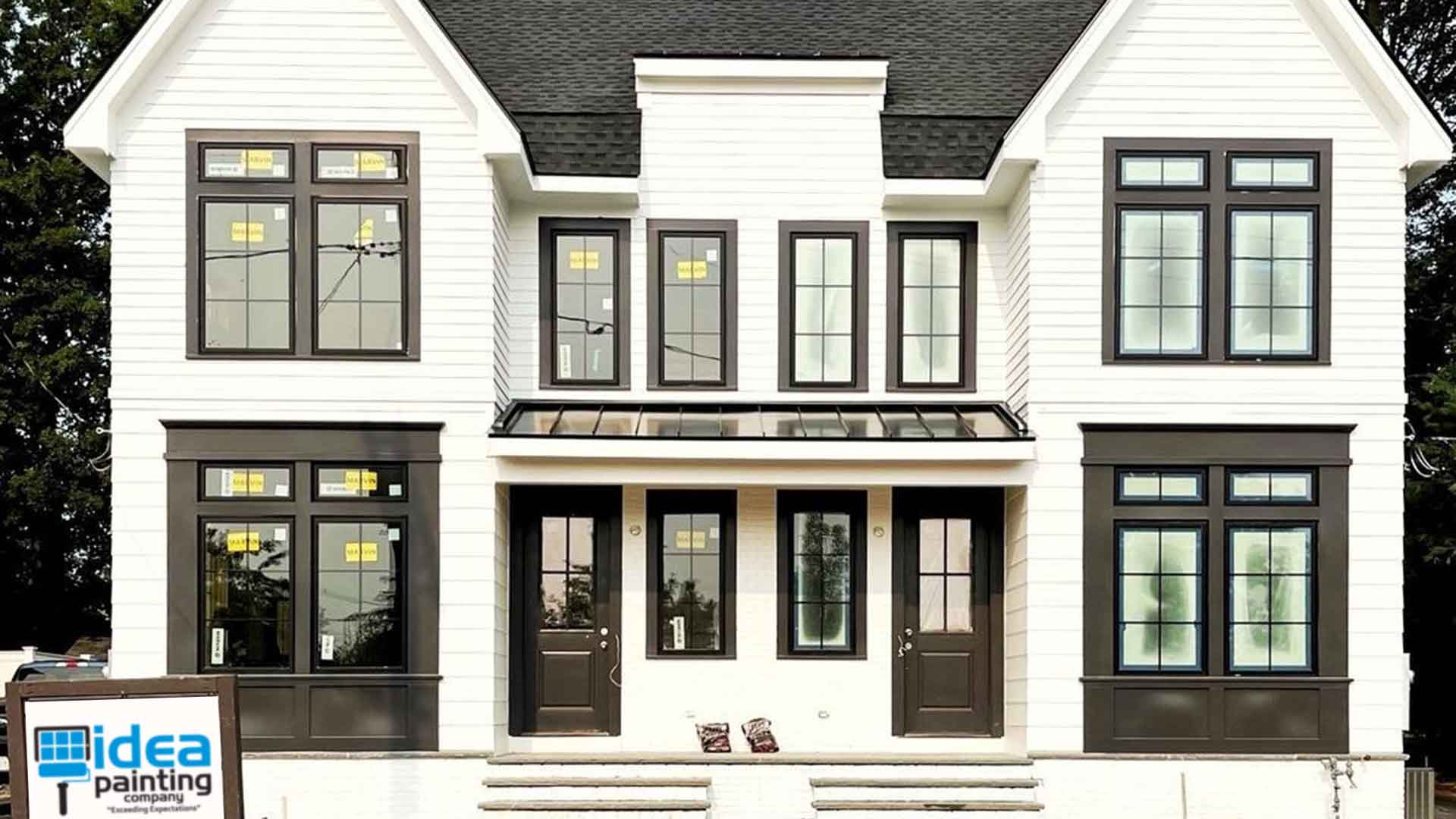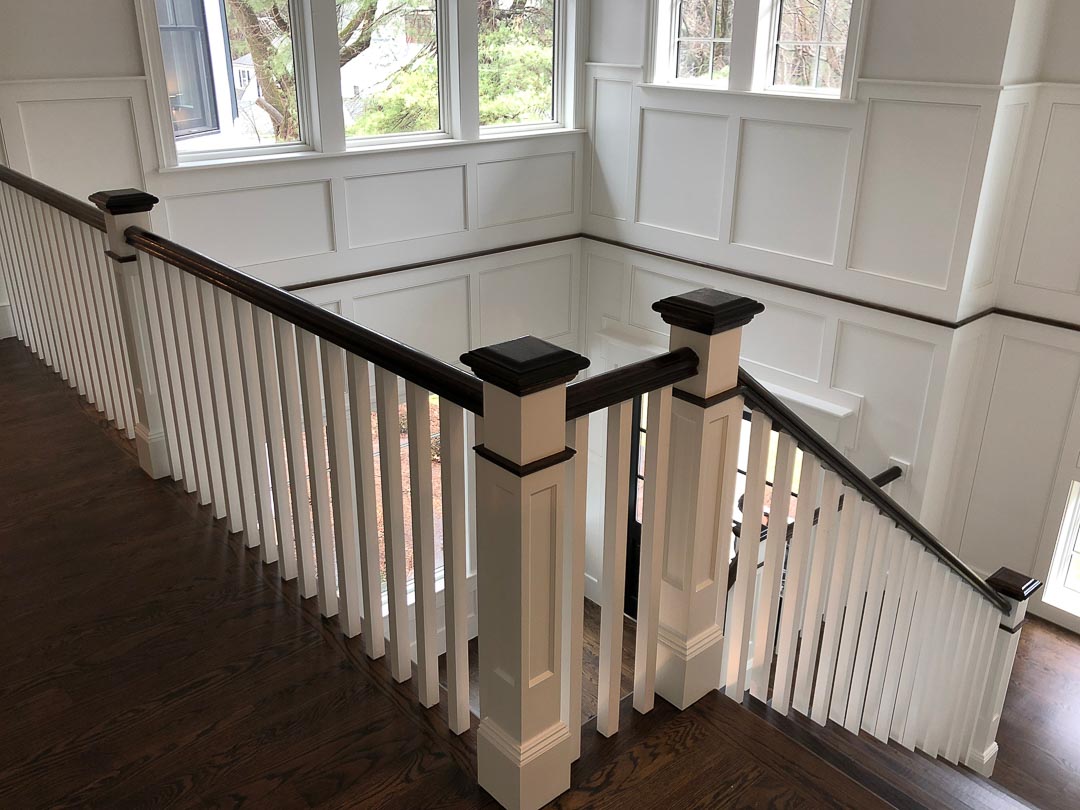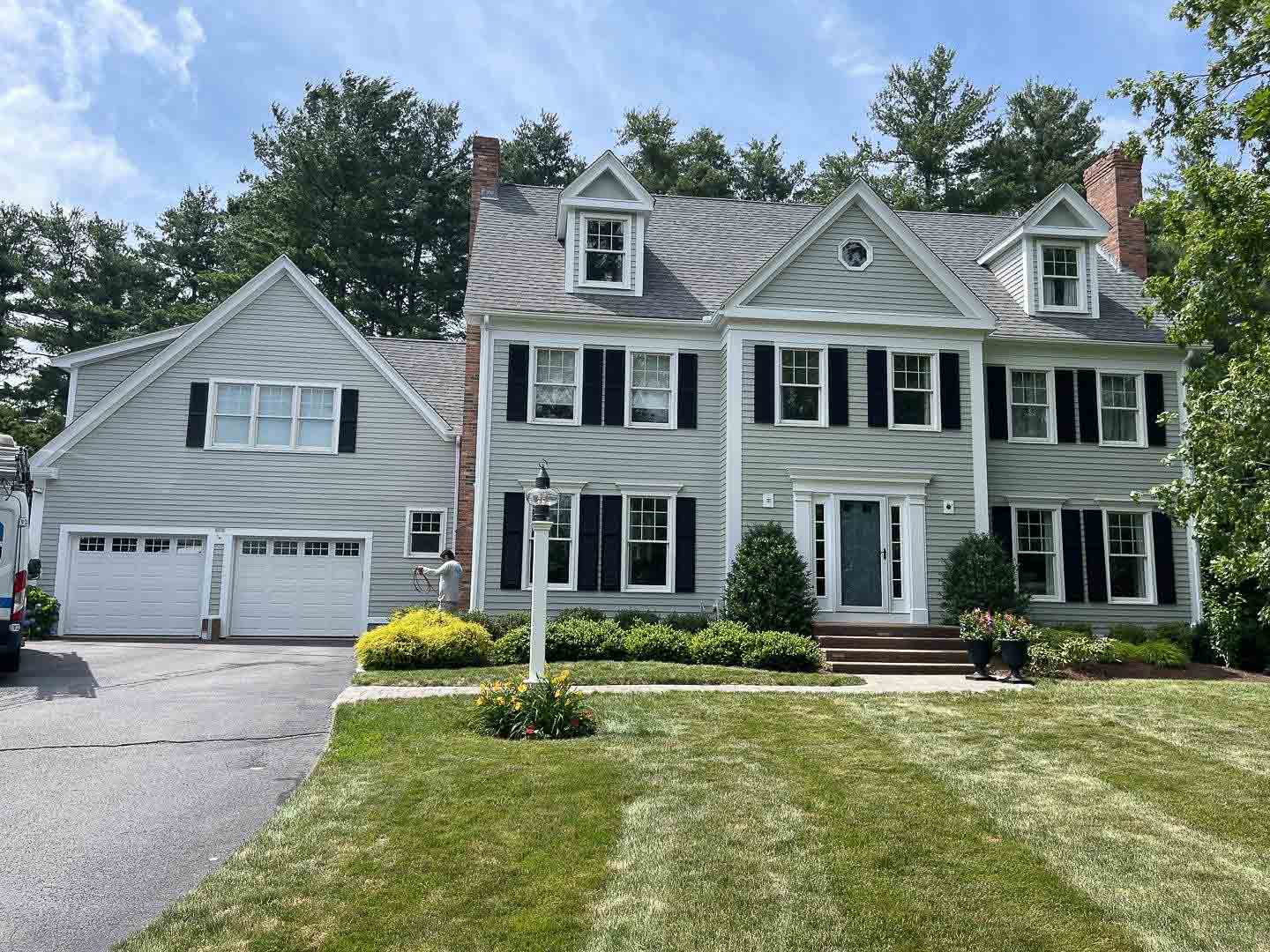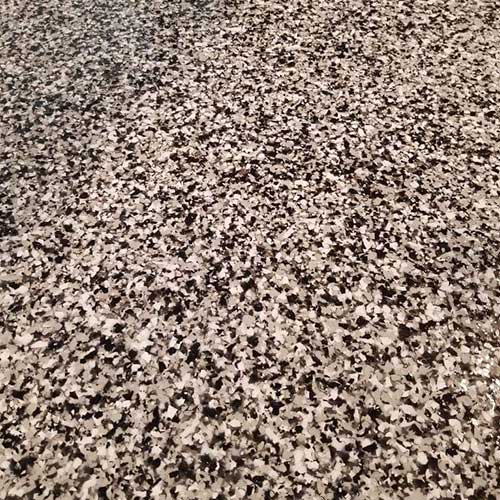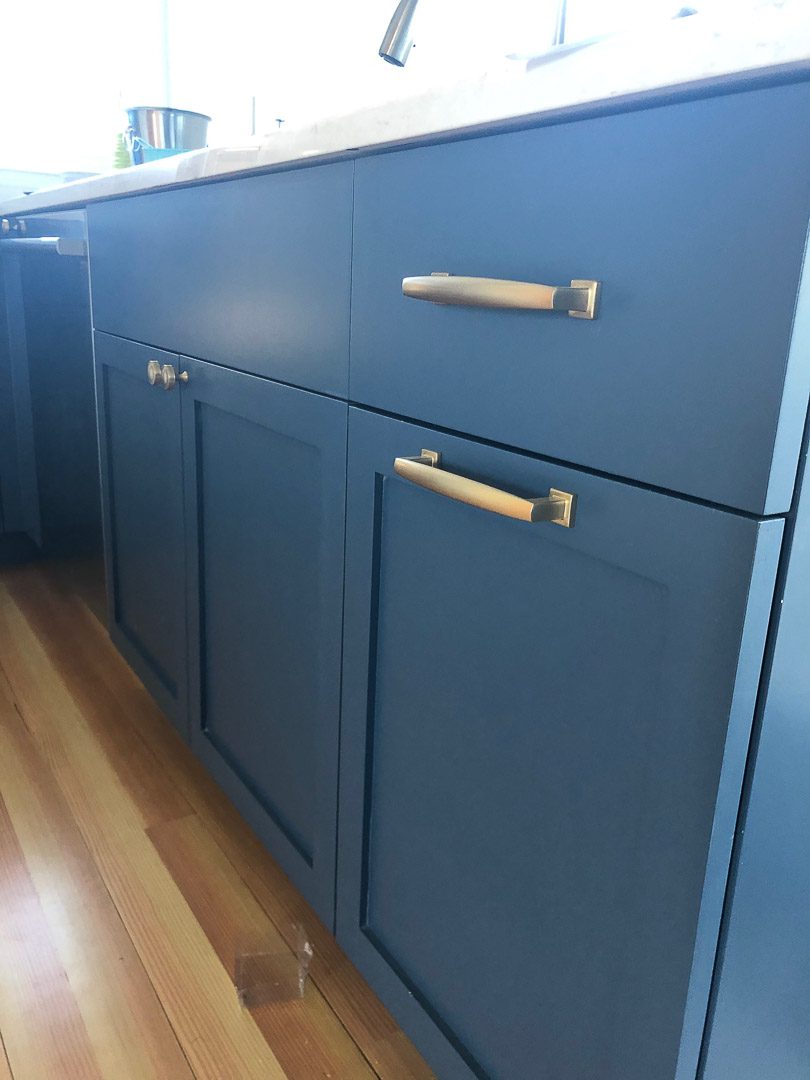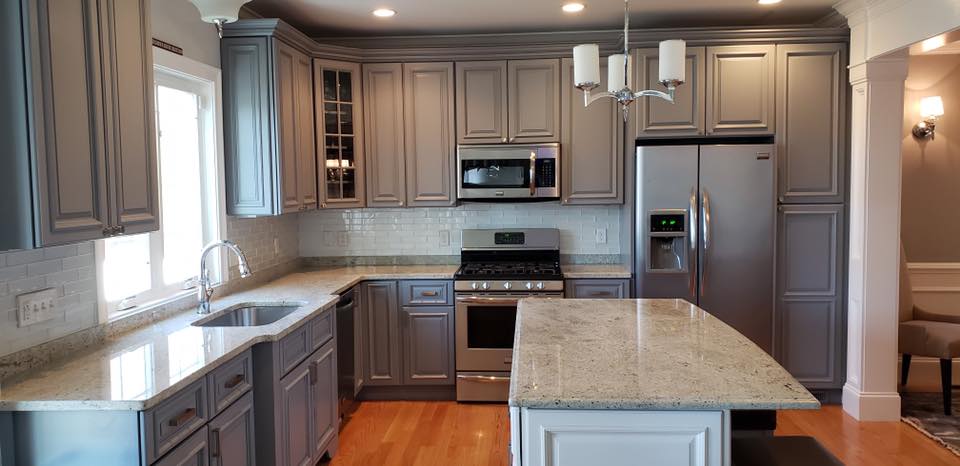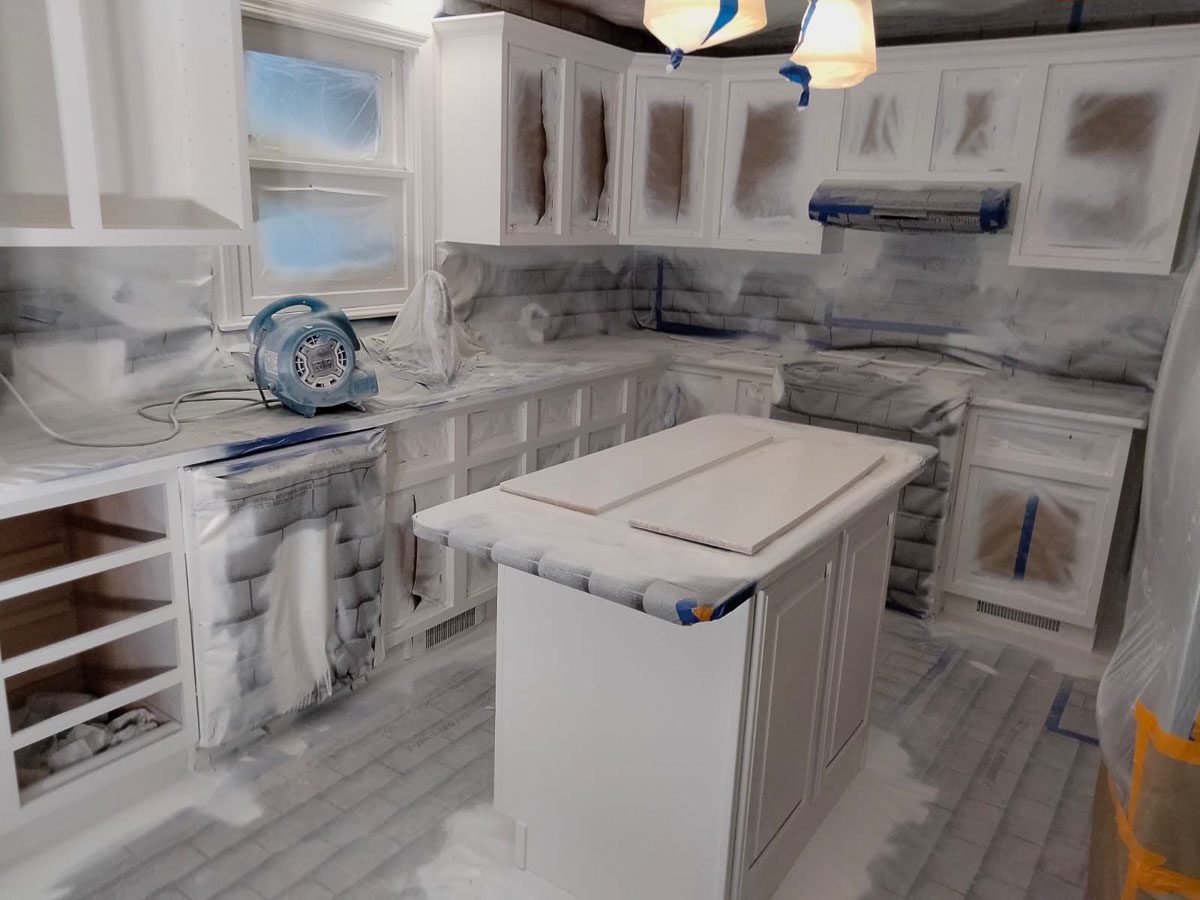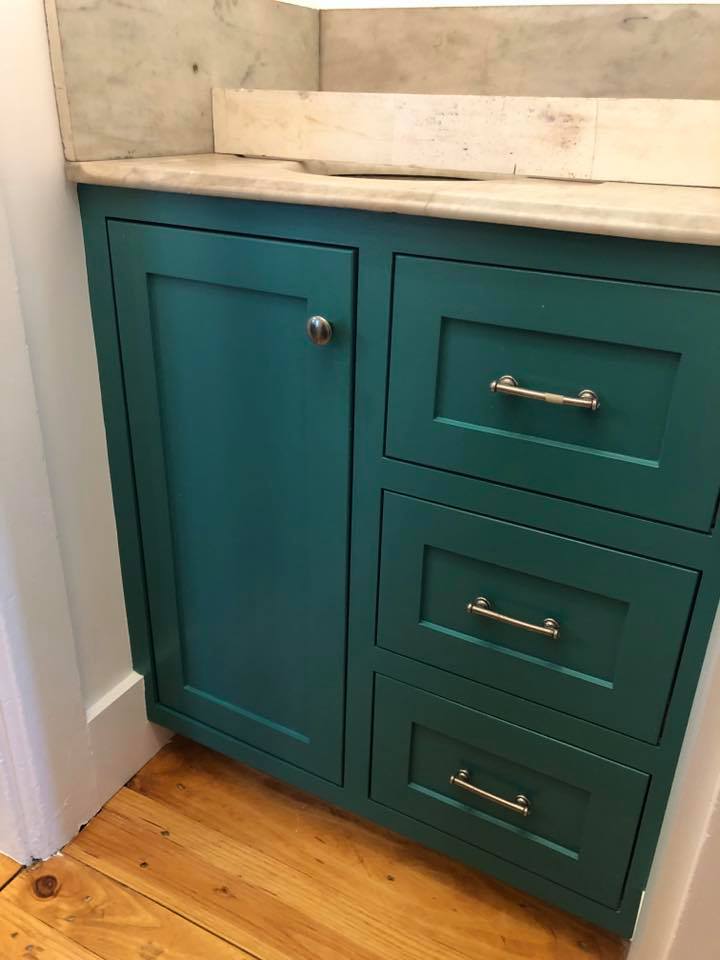Kitchen Cabinet Painting
Watertown MA
[geocentric_weather id=”85a72875-e0a4-433b-847b-9a2e8988e9ff”]
Looking for Kitchen Cabinet Painting in Watertown, MA?
Are you a Homeowner? Business Owner? Property Manager? Or maybe someone just looking for more information on the best Kitchen Cabinet Painting in Watertown MA?
You’re in the right place…
DO YOU HAVE THESE PROBLEMS:
- Replacing kitchen cabinets too expensive
- Time for a color change?
- New Home Or Apartment?
Idea Painting Company, a top-rated painter specializing in kitchen cabinet painting, has helped thousands of Watertown homeowners, business owners, property managers, and other individuals in the Greater Boston, MA area. After some research, we’re confident you’ll find us to be the right kitchen cabinet painting team to handle your kitchen cabinet refinishing project.

Why Choose
Idea Painting Company Is The Best Kitchen Cabinet Painting in Watertown MA?
In short…Because we have a reputation for quality work and being budget friendly. Our customer service is second to none. Our team is always responsive, courteous, friendly, and respectful.
At Idea Painting Company, we do it all! From conception to completion, we handle every aspect of your painting or restoration project. This integrated approach reduces project time and money by streamlining each phase of implementation and eliminating the delays that often plague sub-contracted projects.
With Idea Painting Company, you’ll receive:
- Quality workmanship that is guaranteed to last
- Work from licensed professionals who are honest and hardworking
- Dependable service that is completed on time and on budget
- Free estimates and a fully insured crew
To review the creativity of our work and the quality of our craftsmanship, simply take a look at our Photo Gallery. Our decades worth of painting projects speak for themselves! From custom commercial projects to house painting, and more — You can trust your project or business property to our team of experts.

Residential & Commercial
Full Service Painting Company
Watertown Painting Company
Interior Painter
Watertown MA
Exterior Painter
Watertown MA
Epoxy Floors Watertown MA
Benefits of Repainting Your Kitchen Cabinets
When your cabinets start to look old or outdated, they can bring down the value of your home. They can also make your kitchen feel unwelcoming or dirty. Kitchen cabinet repainting comes with many benefits, including:
- Avoiding the dust and noise that comes with cabinet installation
- No demolition
- Saving money
- Quicker results than replacement
- No need to relevel or redo your plumbing
- Keeping your kitchen in service
If you have old but still usable cabinets, you may want to save them. Often, older cabinets are of better quality than more recent ones. You can bring your current cabinets back to life with kitchen cabinet finishing.
Are you improving your home before you put it on the market? If so, you need to choose your home improvements wisely, so you don’t lose money.
Replace Your Cabinets or Refinish Them?
While replacing your cabinets is the more expensive choice, it may be necessary. When you wonder whether to replace or refinish, consider:
- Functionality. If the location of your cabinets doesn’t work for you, it may be time to replace them.
- Time. Installing a new kitchen can take months, while repainting may only take a week. Think about how long you are willing and able to live without your kitchen.
- Repair. If you have damaged cabinets, you can typically opt for repair. However, extensive damage may make replacement the cheaper option.
The kitchen cabinet painting cost is worth it if you like the current layout of your kitchen or bathroom. You can always reface your cabinetry and add other functional accessories. If you need advice on the best option for your space, call Idea Painting Company today.
What Makes Us Different?
FULLY INSURED
We’re fully insured and bonded to handle all requests.
budget Friendly
We’re willing to discuss projects constrained by a budget.
Quick Service
We show up on time and finish ahead of schedule regularly.
Friendly Team
Our crew is pleasant and easy to talk to on the job site.
Steps to Refinishing Cabinets
The steps to cabinet refinishing can vary, and so can the amount of time it takes to complete the job. When you look for “kitchen cabinet painting near me” expect us to:
- Clean all surfaces thoroughly
- Spread cloths on countertops and floors
- Find the correct solution to strip your cabinets
- Use a wood filler to repair holes and then sand the area
- Paint the wood your desired color and apply the stain and varnish
Sometimes you will want to disassemble your cabinets before you begin. When you do, label the parts to make sure you put them back in the right place. If you can, do your painting outside or somewhere with proper ventilation.
Stripping the cabinets may take trial and error if you do not know the current finish. Some common finishes include:
- Shellac
- Lacquer
- Polyurethane
- Water-based
- Latex- or oil-based paint
Our team completes the steps of kitchen cabinet painting efficiently and expertly. Call us today for a free estimate and ask us how we can upgrade your kitchen.
How to Refinish Cabinets with Paint
Once you choose a paint color, we come in and do your kitchen or bathroom cabinet refinishing onsite. We use high-quality materials, so our results are:
- Durable
- Long-lasting
- Washable
The kitchen is a busy area in the house. Therefore, cabinets need paint that wears well. Drips from your sink, steam from a dishwasher, and heat from the stovetop can all affect your paint’s finish.
Depending on the surface and your preference, we apply the paint using a spraying method or a traditional brush. Spraying provides a smooth, sleek appearance. If you aren’t sure which method you want, our skilled painters will show you samples of both.
You should always do refinishing work in dry conditions. If you do not have an air-conditioned area, consider scheduling your kitchen cabinet finishing in the winter. Call us for cabinet painting at any time of year.
Talk to an Expert
We understand that sometimes you just want to talk before scheduling a consultation. Our team will gladly answer any of your questions or help you with any of your concerns.
Call Elias now! — (855) 544-4335
PAINTER & FLOORING CONTRACTOR
Focused on Exceeding Expectations
Because we pay such attention to detail throughout each project, our painters can still finish on time. But just to ensure that every customer becomes a loyal customer, we don't get paid until the job is all done and you're completely satisfied with our work.
MAP OF Watertown, MA
[geocentric_mapembed id=”85a72875-e0a4-433b-847b-9a2e8988e9ff”]
Watertown OVERVIEW
This article contains content that is written like an advertisement. (February 2019) |
Watertown, Massachusetts | |
|---|---|
City | |
| City of Watertown | |
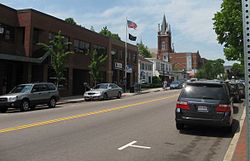 Watertown’s Main Street, facing westward | |
 Seal | |
| Motto(s): In pace condita (Latin) “Founded in peace” | |
 Location in Middlesex County in Massachusetts | |
 Watertown, Massachusetts Location in the United States | |
| Coordinates: 42°22′15″N 71°11′00″W / 42.37083°N 71.18333°WCoordinates: 42°22′15″N 71°11′00″W / 42.37083°N 71.18333°W | |
| Country | United States |
| State | Massachusetts |
| County | Middlesex |
| Settled | July 1630 |
| Incorporated | September 7, 1630 |
| Government | |
| • Type | Council-manager |
| • City Manager | Michael J. Driscoll |
| Area | |
| • Total | 4.12 sq mi (10.68 km2) |
| • Land | 4.00 sq mi (10.35 km) |
| • Water | 0.13 sq mi (0.33 km2) |
| Elevation | 36 ft (11 m) |
| Population (2020) | |
| • Total | 35,329 |
| • Density | 8,841.09/sq mi (3,413.41/km) |
| Time zone | UTC−5 (Eastern) |
| • Summer (DST) | UTC−4 (Eastern) |
| ZIP Code | 02472 |
| Area code | 617/857 |
| FIPS code | 25-73440 |
| GNIS feature ID | 0612401 |
| Website | www.watertown-ma.gov |
Watertown is a city in Middlesex County, Massachusetts, part of Greater Boston. The population was 35,329 in the 2020 census. Its neighborhoods include Bemis, Coolidge Square, East Watertown, Watertown Square, and the West End.
Watertown was one of the first Massachusetts Bay Colony settlements organized by Puritan settlers in 1630. The city is home to the Perkins School for the Blind, the Armenian Library and Museum of America, and the historic Watertown Arsenal, which produced military armaments from 1816 through World War II.
History
Archeological evidence suggests that Watertown was inhabited for thousands of years before colonization. In the 1600s, two groups of Massachusett, the Pequossette and the Nonantum, had settlements on the banks of the river later called the Charles, and a contemporary source lists “Pigsgusset” as the native name of “Water towne.” The Pequossette built a fishing weir to trap herring at the site of the current Watertown Dam. The annual fish migration, as both alewife and blueback herring swim upstream from their adult home in the sea to spawn in the fresh water where they were hatched, still occurs every spring.
Watertown, first known to settlers as Saltonstall Plantation, was one of the earliest of the Massachusetts Bay Colony settlements. Founded in early 1630 by a group of settlers led by Richard Saltonstall and George Phillips, it was officially incorporated that same year. The alternate spelling “Waterton” is seen in some early documents.
The first buildings were upon land now included within the limits of Cambridge known as Gerry’s Landing. For its first quarter century Watertown ranked next to Boston in population and area. Since then its limits have been greatly reduced. Thrice portions have been added to Cambridge, and it has contributed territory to form the new towns of Weston (1712), Waltham (1738), Lincoln (1754) and Belmont (1859). In 1632 the residents of Watertown protested against being compelled to pay a tax for the erection of a stockade fort at Cambridge; this was the first protest in America against taxation without representation and led to the establishment of representative democracy in the colony. As early as the close of the 17th century, Watertown was the chief horse and cattle market in New England and was known for its fertile gardens and fine estates. Here about 1632 was erected the first gristmill in the colony, and in 1662 one of the first woolen mills in America was built here. The first burying ground, on Arlington Street, was established in the 1660s. It contains a monument to Joseph Coolidge, the only Watertown resident killed during the British retreat from Concord in April 1775.
Revolutionary War era
Much excitement was generated in Watertown towards the start of the American Revolutionary War period. In 1773, many of its citizens were engaged with the Sons of Liberty in another tax protest, this time against the British Tea Tax which resulted in the famous Boston Tea Party protest.
Then later (April 1775), some 134 Watertown minutemen responded to the alarm from Lexington to rout the British soldiers from their march to Concord. Thereafter many of these citizen soldiers were part of the first battle line formed at the Siege of Boston. Another Watertown citizen, Israel Bissel, was the first rider to take the news of the British attack and rode all the way to Connecticut, New York and Philadelphia.
The Massachusetts Provincial Congress, after adjournment from Concord, met from April to July 1775 in the First Parish Church, the site of which is marked by a monument. On July 3, George Washington was greeted in Watertown; the following day he took command of the Army in Cambridge. The Massachusetts General Court held its sessions here from 1775 to 1778. Committees met in the nearby Edmund Fowle House. Boston town meetings were held here during the siege of Boston, when many Boston families made their homes in the neighborhood. For several months early in the American Revolution the committees of safety and committee of correspondence made Watertown their headquarters and it was from here that General Joseph Warren set out for Bunker Hill.
The Treaty of Watertown, the first treaty signed between the newly formed United States of America and a foreign power, the St. John’s and Mi’kmaq First Nations of Nova Scotia, was signed in this house.
The Coolidge Tavern, built in 1742, was frequented by minutemen during the war. Here, Washington was entertained on his New England tour in 1789. The tavern was demolished in 1918 to make way for a trolley terminal.
Industrial era
From 1832 to 1834 Theodore Parker conducted a private school and his name is still preserved in the Parker School, though the building no longer operates as a public school.
Mount Auburn Cemetery was founded in 1831, creating the first garden cemetery in the United States. The landscape of Mount Auburn provided inspiration for the nation’s first public parks and picturesque suburbs designed by the early generations of American landscape architects. Mount Auburn has been recognized as one of the most significant designed landscapes in the country. Although perceived as a Cambridge institution, almost all of the cemetery is actually in Watertown.
The Watertown Arsenal operated continuously as a military munitions and research facility from 1816 until 1995, when the Army sold the property, by then known as the Army Materials Technology Laboratory, to the town of Watertown. The Arsenal is notable for being the site of a 1911 strike prompted by the management methods of operations research pioneer Frederick Winslow Taylor (Taylor and 1911 Watertown Arsenal Strike). Taylor’s method, which he dubbed “Scientific Management,” broke tasks down into smaller components. Workers no longer completed whole items; instead, they were timed using stopwatches as they did small tasks repetitively, as Taylor attempted to find the balance of tasks that resulted in the maximum output from workers. The strike and its causes were controversial enough that they resulted in Congressional hearings in 1911; Congress passed a law in 1915 banning the method in government owned arsenals. Taylor’s methods spread widely, influencing such industrialists as Henry Ford, and the idea is one of the underlying inspirations of the factory (assembly) line industrial method. The Watertown Arsenal was the site of a major superfund clean-up in the 1990s, and has now become a center for shopping, dining and the arts, with the opening of several restaurants and a new theatre. The site includes the Arsenal Center for the Arts, a regional arts center that opened in 2005. The Arsenal is now owned by athenahealth. Arsenal Street features two shopping malls across the street from one another, with the Watertown Mall on one side and Arsenal Yards on the other.
The Stanley Brothers built the first of their steam-powered cars, which came to be known as Stanley Steamers, in Watertown in 1897.
The Locomobile Company of America, founded in 1899, also produced steam-powered cars in Watertown until the company moved to Bridgeport, Connecticut.
21st Century
Shortly after midnight of April 18–19, 2013, the two suspects in the Boston Marathon bombing engaged in a protracted battle with police, in Watertown involving the use of firearms and explosives. Tamerlan Tsarnaev was critically wounded and later pronounced dead and the town was completely locked down for hours as police, FBI, and Army National Guard personnel patrolled it, looking for the remaining suspect, Dzhokhar Tsarnaev, who was captured wounded but alive in a boat shortly after the lockdown ended on the following evening.
Geography
Watertown is located at 42°22′17″N 71°10′55″W / 42.37139°N 71.18194°W (42.37139, −71.18194). To the north, it is bordered by the town of Belmont, along Belmont Street; to the south, it is bordered by Newton and Brighton—the border being largely formed by the Charles River. In Watertown Square, the nexus of the town, the town’s border extends south of the Charles to encompass the neighborhood surrounding Casey Playground. To the east lies the City of Cambridge, the border to which is almost entirely the well-known Mount Auburn Cemetery, most of which is actually in Watertown (though commonly believed to be in Cambridge). To the west lies the more expansive city of Waltham, but there is no distinct geographic feature dividing the two municipalities.
According to the United States Census Bureau, the city has a total area of 4.2 square miles (11 km), of which 4.1 square miles (11 km2) is land and 0.1 square miles (0.1 km or 1.20%) is water.
Adjacent cities and towns
Demographics
| Year | Pop. | ±% |
|---|---|---|
| 1840 | 1,810 | — |
| 1850 | 2,837 | +56.7% |
| 1860 | 3,270 | +15.3% |
| 1870 | 4,326 | +32.3% |
| 1880 | 5,426 | +25.4% |
| 1890 | 7,073 | +30.4% |
| 1900 | 9,766 | +38.1% |
| 1910 | 12,875 | +31.8% |
| 1920 | 21,457 | +66.7% |
| 1930 | 34,913 | +62.7% |
| 1940 | 35,427 | +1.5% |
| 1950 | 37,329 | +5.4% |
| 1960 | 39,092 | +4.7% |
| 1970 | 39,307 | +0.5% |
| 1980 | 34,384 | −12.5% |
| 1990 | 33,284 | −3.2% |
| 2000 | 32,986 | −0.9% |
| 2010 | 31,915 | −3.2% |
| 2020 | 35,329 | +10.7% |
| * = population estimate. Source: United States census records and Population Estimates Program data. Source: U.S. Decennial Census | ||
As of the census of 2000, there were 32,986 people, 14,629 households, and 7,329 families residing in the city. The population density was 8,025.7 inhabitants per square mile (3,098.7/km2). There were 15,008 housing units at an average density of 3,651.5 per square mile (1,409.9/km). The racial makeup of the city was 91.42% White, 1.73% African American, 0.16% Native American, 3.87% Asian, 0.02% Pacific Islander, 0.85% from other races, and 1.95% from two or more races. Hispanic or Latino of any race were 2.68% of the population.
There were 14,629 households, out of which 17.8% had children under the age of 18 living with them, 37.9% were married couples living together, 8.7% had a female householder with no husband present, and 49.9% were non-families. 34.1% of all households were made up of individuals, and 12.4% had someone living alone who was 65 years of age or older. The average household size was 2.17 and the average family size was 2.86.
In the city, the population was spread out, with 14.1% under the age of 18, 9.4% from 18 to 24, 39.8% from 25 to 44, 20.0% from 45 to 64, and 16.7% who were 65 years of age or older. The median age was 37 years. For every 100 females, there were 86.1 males. For every 100 females age 18 and over, there were 83.8 males.
The median income for a household in the city was $59,764, and the median income for a family was $67,441. Males had a median income of $46,642 versus $39,840 for females. The per capita income for the city was $33,262. About 4.5% of families and 6.3% of the population were below the poverty line, including 8.6% of those under age 18 and 7.5% of those age 65 or over.
Armenian population
Watertown is a major center of the Armenian diaspora in the United States, with the third-largest Armenian community in the United States, estimated as numbering 7,000 to over 8,000 as of 2007. Watertown ranks only behind the California cities of Glendale and Fresno. Watertown is also the venue for the publication of long-running Armenian newspapers in English and Armenian, including:
- Baikar Association Inc.’s
- Armenian Mirror-Spectator
- Baikar
- Hairenik Association Inc.’s
- Armenian Weekly
- Հայրենիք (Hairenik Weekly)
- Armenian Review
- Hairenik Association also runs a web radio and a web TV station.
Economy
Major employers based in Watertown include the Tufts Health Plan, New England Sports Network, the Perkins School for the Blind, Sasaki, Exergen Corporation, Harvard Business Publishing, Vanasse Hangen Brustlin, Inc., Bright Horizons Family Solutions, and athenahealth.
Transportation
Watertown borders Soldiers Field Road and the Massachusetts Turnpike, major arteries into downtown Boston. Watertown is served by several MBTA bus and formerly trackless trolley routes. Most of them pass through or terminate in Watertown Square or Watertown Yard. The former A-Watertown branch of the MBTA’s Green Line ran to Watertown until 1969.
Education
Public schooling is provided for approximately 2,600 students by Watertown Public Schools, which operates three elementary schools, one middle school, and one high school (Watertown High School).
Private day schools:
- Perkins School
- St. Stephen’s Armenian Elementary School
There is also a supplementary Armenian language school, St. James Erebuni Armenian School (Armenian: Սբ. Հակոբ Էրեբունի հայկական դպրոց), affiliated with the St. James Armenian Apostolic Church, which teaches both Western Armenian and Eastern Armenian to children. It originated as a solely Eastern Armenian supplementary school established in 1988 by the Armenian Society of Boston (Iranahye Miutyun); it was Greater Boston’s first Eastern Armenian supplementary school. It became church-affiliated in 2015, and it merged with a Western Armenian school, St. Sahag & St. Mesrob Armenian School, in September of that year.
Notable people
Culture
- Armenian Library and Museum of America at 65 Main Street in the former Coolidge Bank building
- Hairenik Association at 80 Bigelow Avenue
- Perkins Braille and Talking Book Library, on the campus of the Perkins School for the Blind
- Watertown Free Public Library at 123 Main Street, in a newly renovated and expanded building
- The Mosesian Center for the Arts is a regional arts center located in the former US Army Arsenal along the Charles River. Offerings include visual and performing arts productions, classes, and workshops for all ages, literary/art discussions, and world-class theatrical and musical performances.
- New Repertory Theatre is the resident professional theatre company at the Mosesian Center for the Arts, 321 Arsenal Street
- The Watertown Children’s Theatre at the Mosesian Center for the Arts has been offering classes and productions for children in the area for 35 years.
- The Plumbing Museum, located at 80 Rosedale Road in a former ice house next to the J.C. Cannistraro corporate offices. (Temporarily closed while searching for a new location.)
- The Edmund Fowle House (1772) and Museum, at 28 Marshall St., the second oldest surviving house in Watertown (after the Browne House)
- The Abraham Browne House (built c. 1694–1701) is a colonial house located at 562 Main Street. It is now a nonprofit museum operated by Historic New England and open to the public two afternoons a year.
- Mount Auburn Cemetery, founded in 1831, consists of 151.1 acres of well manicured grounds with numerous species of both indigenous and exotic tree and shrub species. It is Watertown’s largest contiguous open space and extends into Cambridge to the east. It also features the George Washington Tower. Parking is available for visitors.
- Gore Place is an early 19th-century historic house museum and National Historic Landmark in Waltham, Massachusetts, with 31.6 acres of the 45-acre estate located in Watertown.
- The Watertown Arsenal was a major American arsenal located on the northern shore of the Charles River in Watertown. Its site is now registered on the ASCE’s List of Historic Civil Engineering Landmarks and on the U.S. National Register of Historic Places.
See also
- Greater Boston
- Town council
- Robert Seeley
- Watertown Branch Railroad
References
Further reading
- 1871 Atlas of Massachusetts. by Wall & Gray. Map of Massachusetts. Map of Middlesex County.
- History of Middlesex County, Massachusetts, Volume 1 (A-H), Volume 2 (L-W) compiled by Samuel Adams Drake, published 1879–1880.
- Watertown article by Francis S. Drake in volume 2, pages 433–460.
- An Historical Sketch of Watertown, in Massachusetts, by Convers Francis, published in 1830.
- Bond, Dr. Henry, Genealogies of Watertown, Massachusetts, Boston: Higginson Book Company (undated modern reprint of 1860 edition).
- Thompson, Roger, Divided We Stand, Watertown, Massachusetts 1630–1680, Amherst: University of Massachusetts Press, 2001.
- Tourtellot, Arthur B., The Charles (Rivers of America series), New York: Farrar & Rinehart, Inc., 1941.
- Fischer, David Hackett, Albion’s Seed, Four British Folkways in America, New York: Oxford University Press, 1989.
External links
- Watertown official website
- Watertown History
- Zoomable view of Watertown circa 1879
THINGS TO DO Watertown
[geocentric_thingstodo id=”85a72875-e0a4-433b-847b-9a2e8988e9ff”]
DRIVING DIRECTIONS
[geocentric_drivingdirections id=”85a72875-e0a4-433b-847b-9a2e8988e9ff”]
NEIGHBORHOODS
[geocentric_neighborhoods id=”85a72875-e0a4-433b-847b-9a2e8988e9ff”]
BUS STOPS
[geocentric_busstops id=”85a72875-e0a4-433b-847b-9a2e8988e9ff”]
